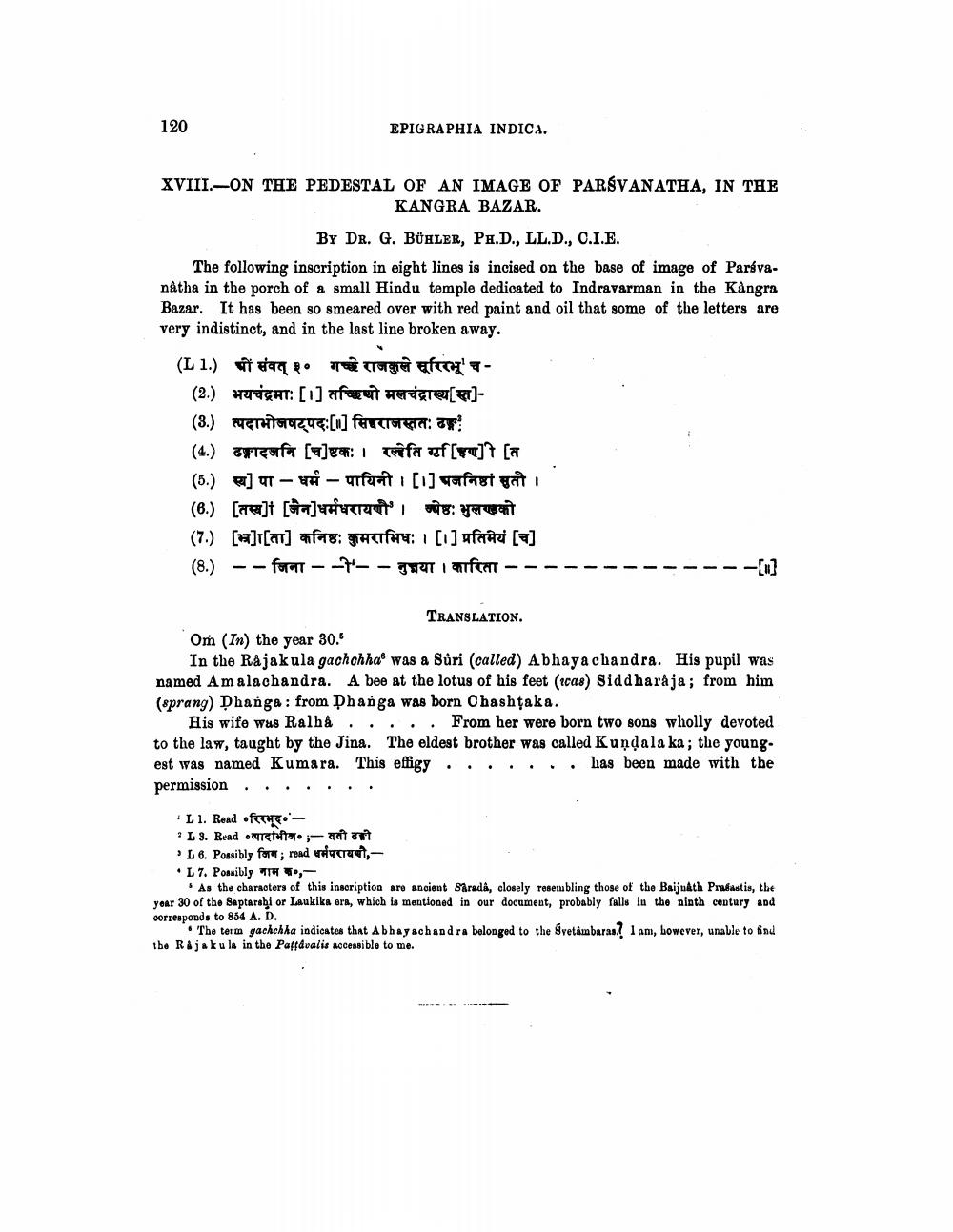________________
120
EPIGRAPHIA INDICA.
XVIII.-ON THE PEDESTAL OF AN IMAGE OF PARÁVANATHA, IN THE
KANGRA BAZAR.
BY DR. G. BÜHLER, PH.D., LL.D., C.I.E. The following inscription in eight lines is incised on the base of image of Parsvanåtha in the porch of a small Hindu temple dedicated to Indravarman in the Kångra Bazar. It has been so smeared over with red paint and oil that some of the letters are very indistinct, and in the last line broken away.
(L 1.) 199 • we area
(2.) HIGHT: [1] aft weige [ET](3.) ceritancus:[] fuscargar: ax! (4.) Figafar []&#: | Tafa ef[6] 7 [a (5.) ] T - E - urforanti [1] vafalet git (6.) [Te] [a]erred 8 year (7.) [*]1[AT] #178: stacifire: 1 [l] afazi [=] (8.) -- for --7- - Y a fa ------
----
TRANSLATION. Om (In) the year 30.5
In the Rajakula gachchha was a Suri (called) Abhayachandra. His pupil was named Amalachandra. A bee at the lotus of his feet (cas) Siddharåja; from him (sprang) Dhanga: from Dhanga was born Chashtaka.
His wife was Ralha ..... From her were born two sons wholly devoted to the law, taught by the Jina. The eldest brother was called Kundala ka; the young. est was named Kumara. This effigy ....... has been made with the permission .......
L 1. Read foto?L 3. Read Tetit. ;- act oft
L 6. Possibly fora; read Hatet, • L 7. Possibly T T ,
. As the characters of this inscription are ancient Saradâ, closely resembling those of the Baijnath Prasastis, the year 30 of the Saptarshi or Laukika era, which is mentioned in our document, probably falls in the ninth century and corresponds to 884 A. D.
The term gachchha indicates that Abhayachandra belonged to the Svetambaras.? I am, however, unable to find the Rajakula in the Paffdvalis accessible to me.




